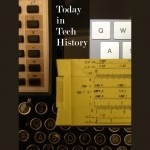 In 1931 – US Patent No. 1,835,031 for a “concentric conducting system” was awarded to Lloyd Espenschied of Kew Gardens, New York, and Herman A. Affel of Ridgewood, New Jersey, and assigned to the American Telephone & Telegraph Co. Coaxial Cable had been patented.
In 1931 – US Patent No. 1,835,031 for a “concentric conducting system” was awarded to Lloyd Espenschied of Kew Gardens, New York, and Herman A. Affel of Ridgewood, New Jersey, and assigned to the American Telephone & Telegraph Co. Coaxial Cable had been patented.
In 1993 – The US. secretary of defense declared the GPS system a dual use system that had Initial Operation Capability and opened the Standard Positioning System to civilians, which gave accuracy of nine meters horizontally.
In 2010 – With the second launch of the SpaceX Dragon, SpaceX became the first privately held company to successfully launch, orbit and recover a spacecraft.
Like Tech History? Get the illustrated Year in Tech History at Merritt’s Books site.